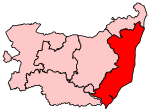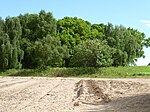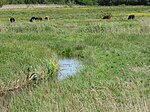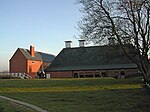Alde Mudflats

Alde Mudflats is a 22 hectare nature reserve west of Iken in Suffolk. It is owned by the Crown Estate and managed by the Suffolk Wildlife Trust. It is in the Suffolk Coast and Heaths Area of Outstanding Natural Beauty, and part of the Alde-Ore Estuary Site of Special Scientific Interest, Ramsar internationally important wetland site, Special Area of Conservation, Special Protection Area under the European Union Directive on the Conservation of Wild Birds, and Grade I Nature Conservation Review site,This three mile long stretch of inter-tidal mud and saltmarsh supports internationally important numbers of avocets, and other birds include black-tailed godwits, oystercatchers, marsh harriers, pintails, wigeons and grey plovers.There is no public access to the site.
Excerpt from the Wikipedia article Alde Mudflats (License: CC BY-SA 3.0, Authors, Images).Alde Mudflats
Tunstall Road, East Suffolk
Geographical coordinates (GPS) Address Nearby Places Show on map
Geographical coordinates (GPS)
| Latitude | Longitude |
|---|---|
| N 52.152 ° | E 1.505 ° |
Address
Iken Cliff Picnic Site
Tunstall Road
IP12 2EN East Suffolk
England, United Kingdom
Open on Google Maps







